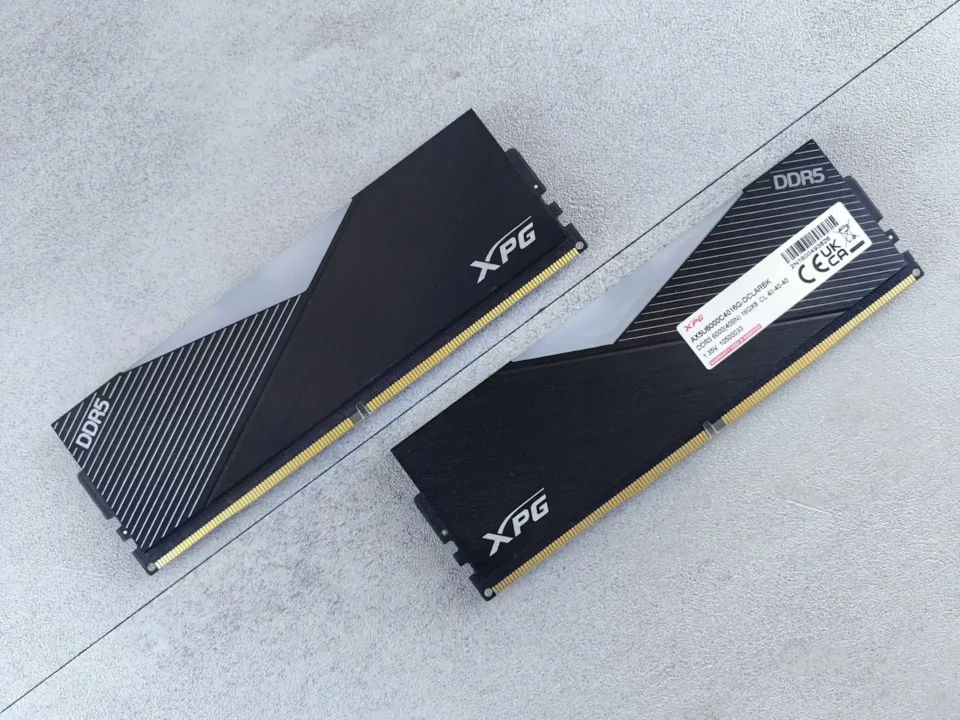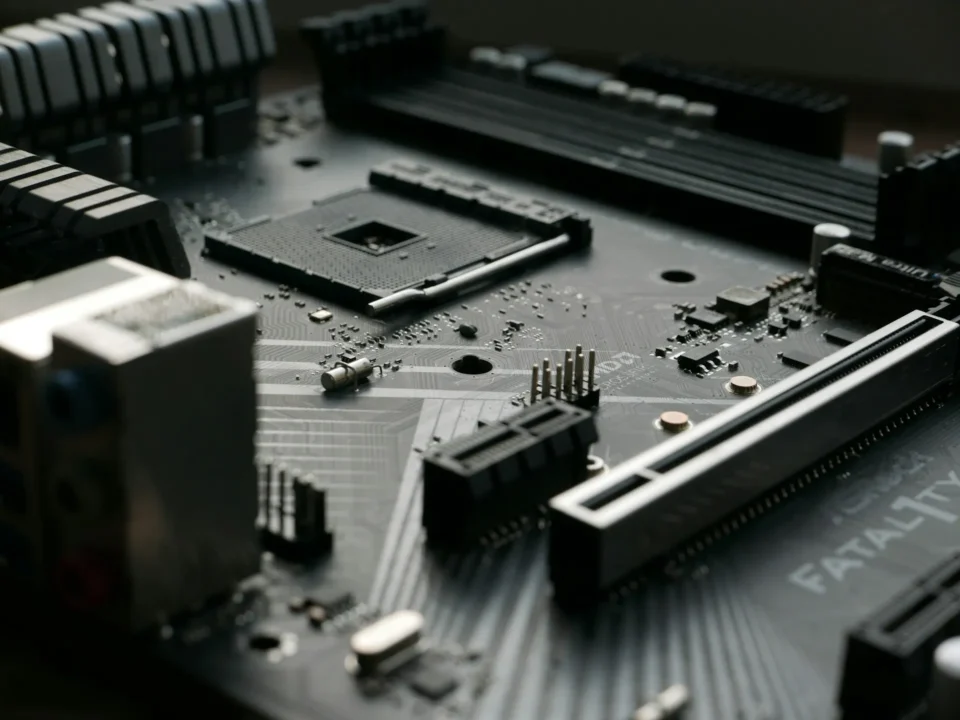Best CPU for your needs in 2025

Best GPU for Your Needs in 2025: A Complete Buyer’s Guide
July 24, 2025
What a PSU Actually Does & What “Efficiency” Ratings Mean
September 17, 2025“Best CPU” means different things depending on what you actually do. In 2025, the CPU landscape is the most diverse it’s been in years: AMD’s Zen 5 Ryzen 9000 lineup (including the X3D gaming champs), Intel’s Arrow Lake “Core Ultra” desktops on the new LGA1851 socket, and a resurgence of many-core workstation chips with Threadripper 9000. There are also excellent, inexpensive older CPUs that still make a ton of sense if you’re building on a budget—or keeping a GPU-less build thanks to modern integrated graphics.
Below is a practical, no-nonsense guide that covers three use cases—everyday computing, gaming, and heavy workloads—with both brand-new picks and thrifty older alternatives. I’ll also call out CPUs with built-in graphics (iGPUs) that are genuinely usable.
Platform quick facts you should know
- AM5 has legs. AMD reiterated support for the AM5 socket through at least 2027, which means drop-in upgrades for multiple future generations. If you care about upgrade paths, this matters.
- Intel’s new desktop platform is LGA1851. Arrow Lake (Core Ultra 200 desktop, like the Ultra 9 285K/Ultra 7 265K) brings a new socket, a fresh CPU architecture, and updated integrated graphics. If you’re moving from 12th/13th/14th-gen Intel, this is a platform swap.
The best CPU for everyday use (web, office, light creative, light gaming)
For a regular user, the “best” CPU feels instant, stays cool, doesn’t cost a fortune, and sits on a platform you can grow into. Two paths:
Go new for longevity (AM5 or LGA1851):
- AMD Ryzen 5 9600X / Ryzen 5 7600. Six cores, snappy single-thread performance, and the AM5 upgrade runway. Pair with a B650/B650E board and 32 GB DDR5.
- Intel Core Ultra 5 245 / Ultra 7 265 (non-K). Arrow Lake brings a modern iGPU and efficient cores; great for a quiet, responsive daily driver with optional light gaming if you don’t add a GPU.
Spend less with proven older chips:
- Intel Core i5-12400F / i5-13400F. These continue to be outstanding value parts in 2025, widely recommended as budget kings because they deliver smooth desktop performance and good gaming when paired with a midrange GPU. If you already own an LGA1700 board or find a bundle deal, they’re hard to beat.
- AMD Ryzen 5 5600. On AM4 (DDR4), this is still a great “get-it-done” six-core with low platform cost. It’s not the newest and AM4 is effectively end-of-line, but if affordability rules, it’s a terrific pick—especially for upgrades to an older AM4 system.
Everyday user tip: If you don’t plan to buy a graphics card, look for a CPU with an iGPU (see the iGPU section below). If you do plan to add a GPU, “F”-suffixed Intel chips (12400F/13400F) save money by skipping the iGPU.
The best CPU for gaming in 2025
If pure gaming performance is your goal, AMD’s 3D V-Cache chips are still the ones to beat. They deliver consistently higher frame rates and, crucially, better 1% lows for smoother play—even against higher-wattage Intel parts.
- Top pick: Ryzen 7 9800X3D. Across independent testing, this eight-core Zen 5 chip with 3D V-Cache sits on top of gaming charts, typically leading Intel’s flagship gaming processors and AMD’s own non-X3D parts. If you’re building a no-compromise gaming rig today, this is the default choice.
- Do-it-all gaming & creation: Ryzen 9 9950X3D. It combines the gaming magic of V-Cache with 16 cores for heavy multitasking and creative work. Reviews show it outpacing Intel’s Core Ultra 9 285K by a substantial margin in many gaming workloads, while remaining very competitive in productivity. If you stream, edit, and game, it’s a monster.
- Great value if you spot a sale: Ryzen 7 7800X3D. Last generation’s legend is still an amazing gaming CPU, and its 2025 street prices often undercut newer parts. If your budget doesn’t stretch to the 9800X3D, the 7800X3D remains a killer buy.
- Intel alternatives: Core Ultra 9 285K / Ultra 7 265K. Brand-new architecture, new socket, better iGPU—but for CPU-limited gaming, they generally trail AMD’s X3D lineup (both in averages and 1% lows). They’re still good chips; they’re just not the gaming champs right now.
Gaming tip: At 1440p and especially 4K, you’re often GPU-bound. If you game at higher resolutions, a cheaper non-X3D chip can make sense if it lets you buy a stronger graphics card. But if you chase high frame-rate 1080p/1440p esports, the X3D parts shine.
The best CPU for heavy workloads (video, 3D, code builds, data)
If your day is full of Blender renders, 8K timelines, Unreal builds, or compilers chewing through giant repos, you want cores, cache, memory bandwidth, and I/O. Two classes to consider:
High-end desktop (HEDT) / Workstation:
- AMD Ryzen Threadripper 9000 (Zen 5). The new 9970X (32 cores) and 9980X (64 cores) bring huge throughput with quad-channel DDR5 and up to 80 PCIe 5.0 lanes on the TRX50 platform. They’re designed for creators who need more than mainstream desktops can provide, and reviews confirm enormous gains in rendering and heavy compute.
- Threadripper PRO 9000 WX-Series. If you need even more memory channels, ECC, and full workstation features, the PRO parts scale up to 96 cores and 128 PCIe 5.0 lanes (OEM and channel availability, premium pricing).
Mainstream desktop that punches up:
- Ryzen 9 9950X (non-X3D). Sixteen Zen 5 cores with excellent single-thread and multicore performance make it a “Creator-by-day, Gamer-by-night” CPU without stepping into HEDT. If you don’t need Threadripper’s lanes or memory channels, the 9950X is a brilliantly fast all-rounder on AM5.
Workstation tip: Don’t buy more socket than you need. Threadripper’s platform costs (board, RAM, cooling, PSU) are significant. If your workload is mostly lightly-threaded with occasional multi-thread bursts, a Ryzen 9 may be smarter—and cheaper.
CPUs with integrated graphics that are actually usable
If you’re building a compact PC, a living-room machine, or a budget box without a discrete GPU, modern iGPUs can carry you—within reason.
- AMD Ryzen 7 8700G / Ryzen 5 8600G (Ryzen 8000G). These APUs deliver the best desktop iGPU gaming today. With fast DDR5, expect genuinely playable 1080p results in many games at modest settings; the 8700G leads, while the 8600G offers most of the experience for less. If you later add a GPU, you still have a solid CPU.
- Intel Arrow Lake “Core Ultra” desktops (non-F). Core Ultra 5/7/9 desktop chips include Xe-LPG integrated graphics. They’re excellent for multi-display office work, media, quick edits, and older or lighter games. If you plan to stay iGPU-only and game more, the AMD APUs remain stronger—but Intel’s iGPU is a real step forward for desktop usefulness.
iGPU tip: Memory speed matters. Both AMD and Intel iGPUs scale with faster DDR5. If you’re chasing every frame without a discrete GPU, choose higher-speed RAM within your budget.
Cheaper “still good” options worth considering
When the budget is tight—or you’re reviving an older system—these parts make a lot of sense:
- Intel Core i5-12400F / i5-13400F. Incredible value in 2025 budget roundups. Drop one into an affordable B660/B760 board (DDR4 or DDR5) and pair with, say, an RTX 4060/4070-class GPU for a very competent gaming PC.
- AMD Ryzen 5 5600 (AM4). A perennial favorite for upgrades to existing AM4 systems. If you can reuse a good B450/B550/X570 board and DDR4, it’s hard to find more bang for the buck. Just remember the AM4 platform has reached the end of its upgrade path.
- AM4 gaming specials: Ryzen 7 5800X3D remains a fantastic AM4 gaming CPU if you’re staying on DDR4 and want the simplest drop-in uplift for frames.
- Budget APUs: Ryzen 5 5600G / Ryzen 7 5700G are older but still fine for basic builds with no GPU, HTPCs, or office desktops that might later get a small GPU.
How to pick the right CPU—for you
- Be honest about your bottleneck. If you play at 1440p/4K with a midrange GPU, moving from a good six-core to a top-tier eight-core gaming chip may not change much. Spend the money on the GPU instead.
- Prioritize platform costs. Motherboards and memory often swing total price more than the CPU. AM5 boards and DDR5 prices have improved a lot since launch, and AM5’s 2027+ runway is real.
- Think thermals and noise. A cool, efficient chip can mean a quieter PC. AMD’s X3D parts typically deliver elite gaming performance at relatively low power, which helps both temps and acoustics.
- Creator first? Buy cores and I/O. If your apps eat threads for breakfast, the step from a 16-core Ryzen 9 to a 32/64-core Threadripper is transformative, and the extra PCIe lanes/DRAM channels are game-changing for scratch disks and multi-GPU workflows.
- No GPU? Choose the right iGPU. AMD’s 8700G/8600G are the best for true “console-like” 1080p at modest settings; Intel’s Arrow Lake iGPUs are ideal for smooth desktop/video and lighter games.
Recommended picks by scenario
- Everyday user, wants longevity: Ryzen 5 9600X on AM5, or Core Ultra 5 245 on LGA1851.
- Budget everyday/gaming hybrid: Core i5-12400F/13400F or Ryzen 5 5600 (especially as an AM4 upgrade).
- Pure gaming, high refresh 1080p/1440p: Ryzen 7 9800X3D. If you find a steep deal, Ryzen 7 7800X3D is still excellent.
- Gaming + content creation together: Ryzen 9 9950X3D.
- Heavy workstation workloads: Threadripper 9970X/9980X (TRX50) or PRO 9000 WX for maximum memory channels and lanes.
- No discrete GPU build: Ryzen 7 8700G or Ryzen 5 8600G; for office/media-first PCs on Intel, pick a non-F Core Ultra desktop.
Final word
In 2025, the easy answers are genuinely easy: for gaming, get an AMD X3D part; for heavy work, buy as many Zen 5 cores (and as much I/O) as your budget needs; for everyday computing, prioritize platform and total build cost. The harder part is resisting the siren song of “overbuying.” Match the CPU to your real bottlenecks, leave room in the budget for the GPU and storage that will actually change your experience, and choose a platform that won’t trap you when you want to upgrade in two years.
If you want help tuning this to your exact budget, case, and GPU, tell me your use-case, resolution, and parts you already own—I’ll tailor a build list around the CPUs above.




